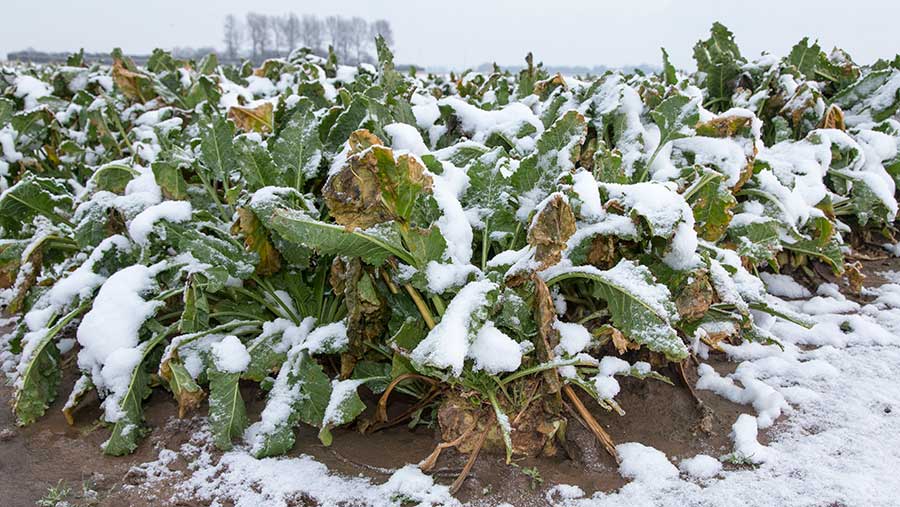Beet growers advised to check crops for frost damage
 © Gary Naylor
© Gary Naylor The current cold spell has increased the risk of frost damage to beet, with growers being advised to check crops amid a rise in reported cases of damaged roots.
Freezing temperatures followed by sudden thaws can lead to deteriorating roots, as seen in the 2010 big freeze, when 40% of the UK crop was frosted and areas were rendered unprocessable.
The British Beet Research Organisation (BBRO) says crops that have already been lifted and in clamp are most at risk to frost damage.
See also: Herbicide-tolerant sugar beet draws growers amid high costs
While crops in the ground may be at lower risk, it will depend on the insulation provided by the leaf canopy. That’s a concern for those crops already affected by the beet moth.
BBRO says beet tends to freeze at temperatures below -3C, but damage will vary from field to field and even between plants within a field.
Damage is due to rupturing of the cells. Then there is the risk of secondary rots caused by fungi and bacteria, the severity of which depends on how warm the temperatures are after the frost.
However, BBRO adds that not all frosted beet will deteriorate, but may have a lower sugar content and higher impurity level.
Assess damage
Therefore, growers are advised to assess crop for damage. “On thawing, a frosted root will take on a translucent glassy appearance, with the vascular rings more prominent and may have a brown/black discoloration.”
In the meantime, growers are advised to check roadside piles and to keep checking for symptoms as temperatures rise.
Other tips include:
- While the risk of frost remains, focus on clearing roadside stock rather than increasing harvested crops, as beet will be more protected in the ground.
- Make sure any longer-term clamps have level tops to avoid frost pockets from forming. Consider covering clamps, if possible, and avoid loading frosted beet into longer-term storage clamps.
- If the crop shows signs of deterioration, you may want to consider lowering scalpers to remove more of the crown. Also, skim clamps to remove deteriorated beet before delivery.
- Communications – keep in close contact with your harvester operator, haulier and your British Sugar account manager on any potential issues.

